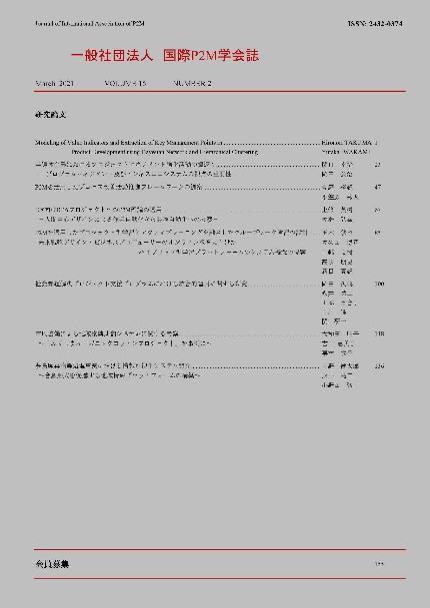Volume 15, Issue 2
Journal of International Association of P2M Vol.15, No.2, March. 2021
Displaying 1-11 of 11 articles from this issue
- |<
- <
- 1
- >
- >|
-
2021Volume 15Issue 2 Pages Cover_1-Cover_2
Published: 2021
Released on J-STAGE: March 26, 2021
Download PDF (309K) -
2021Volume 15Issue 2 Pages 1-22
Published: 2021
Released on J-STAGE: March 26, 2021
Download PDF (1381K) -
2021Volume 15Issue 2 Pages 23-46
Published: 2021
Released on J-STAGE: March 26, 2021
Download PDF (875K) -
2021Volume 15Issue 2 Pages 47-66
Published: 2021
Released on J-STAGE: March 26, 2021
Download PDF (2405K) -
2021Volume 15Issue 2 Pages 67-84
Published: 2021
Released on J-STAGE: March 26, 2021
Download PDF (1364K) -
2021Volume 15Issue 2 Pages 85-99
Published: 2021
Released on J-STAGE: March 26, 2021
Download PDF (904K) -
2021Volume 15Issue 2 Pages 100-117
Published: 2021
Released on J-STAGE: March 26, 2021
Download PDF (642K) -
2021Volume 15Issue 2 Pages 118-135
Published: 2021
Released on J-STAGE: March 26, 2021
Download PDF (1083K) -
2021Volume 15Issue 2 Pages 136-154
Published: 2021
Released on J-STAGE: March 26, 2021
Download PDF (3111K) -
2021Volume 15Issue 2 Pages 155-156
Published: 2021
Released on J-STAGE: March 26, 2021
Download PDF (405K) -
2021Volume 15Issue 2 Pages Cover_3-Cover_4
Published: 2021
Released on J-STAGE: March 26, 2021
Download PDF (361K)
- |<
- <
- 1
- >
- >|
